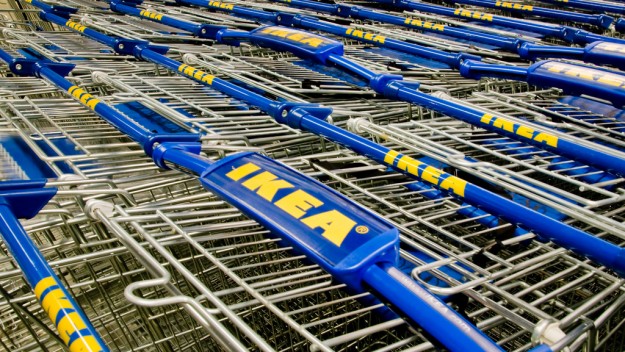People & Planet Positive: A sustainability strategy for 2020
Having recently published their sustainability strategy for 2020, entitled People & Planet Positive, the famous Swedish furniture retailer, IKEA plans to build on existing “green” practices while committing to meet some ambitious targets by 2020. According to Green Biz, IKEA designed its strategy only after several years of data collection, intensive energy audits and energy needs assessments, as well as a construction plan to own and operate solar and wind power systems throughout its operation: “We want to take a stand for renewable energy,” says Steve Howard, Chief Sustainability Officer at the IKEA Group, “and we can do that most effectively by investing directly in it. Then we can meet our energy needs from our own renewable energy assets”
En route to becoming ueber-“green”, the company is aiming to source 50% of projected wood from preferred sources; ensure that all cotton used is produced in line with the Better Cotton Initiative; have all home furnishing materials, including packaging, made from renewable, recyclable or recycled materials; and the list goes on.
Thankfully, according to Red Design Revolution, IKEA already has a solid leg to stand on when it comes to the integration sustainable practices. In the past few years, IKEA has not only invested in flat-pack furniture and renewable energy, but continues to refuse to use trees extracted from tropical forests (which are quickly deteriorating) for the production of their merchandise.
Increasing energy-efficiency and becoming carbon-neutral by 2020
What sparked our interest in IKEA’s sustainable strategy was the company’s grand commitment to producing as much renewable energy as they consume in their operations; essentially becoming carbon-neutral by 2020. Outrageous a target as this may appear, IKEA is actually in a very good position to be able to reach it on or ahead of schedule. Reason being, according to Inhabitat, that the company already owns a number of wind farms and solar panels which currently account for approximately 27% of the company’s energy use. IKEA hopes to increase this number to 70% by 2016 and to 100% by 2020.
In the People & Planet Positive report, the company also announces the desire to become a leader in renewable energy, focusing on energy-efficient changes throughout operations and supply chain. They also commit to designing, equipping and operating every new IKEA store, office, distribution centre and industrial group factory in a way that ensures they are the most sustainable facility at that point in time. If IKEA succeeds in meeting these goals, it could mean big changes for the future of retail, especially for operators who, to date, neglect the impact their businesses have on the environment and the size of their ever-increasing carbon footprint.
From the sounds of it, IKEA is mapping out a more effective use of energy from production and supply chain all the way to educating homeowners how to go “green” (also a component of the 2020 strategy) but that’s not all. Inhabitat says that the company has also committed to plant more trees than it uses in production and aims to limit sales to energy-efficient products like LED light bulbs, refrigerators and induction stoves.
Are you an IKEA fan or fellow members of the industry? We’d love to hear from you! Leave your questions or comments about IKEA’s 2020 sustainable strategy in the “Comments” section below!
image credit: Ballet Lausanne



















